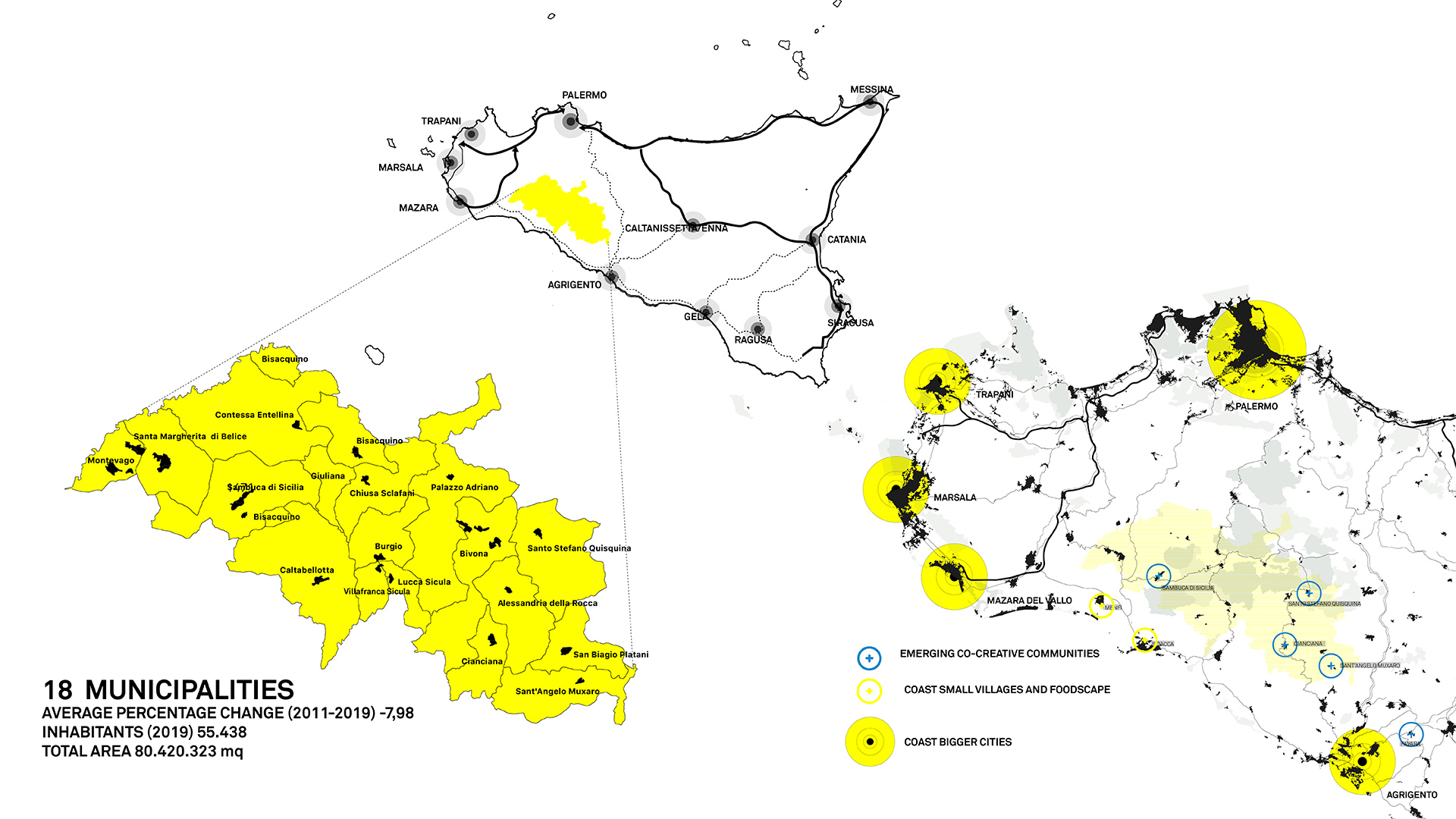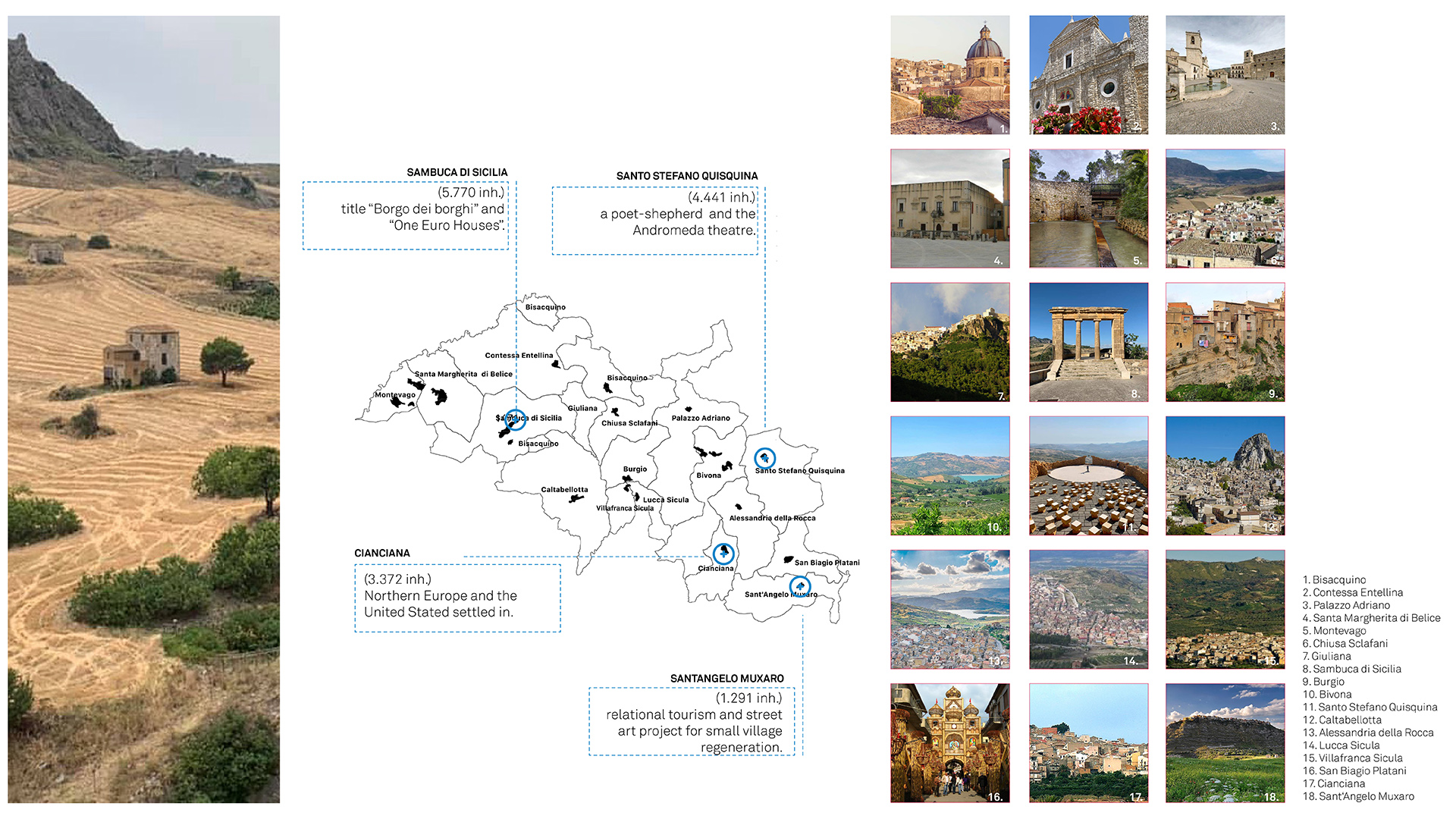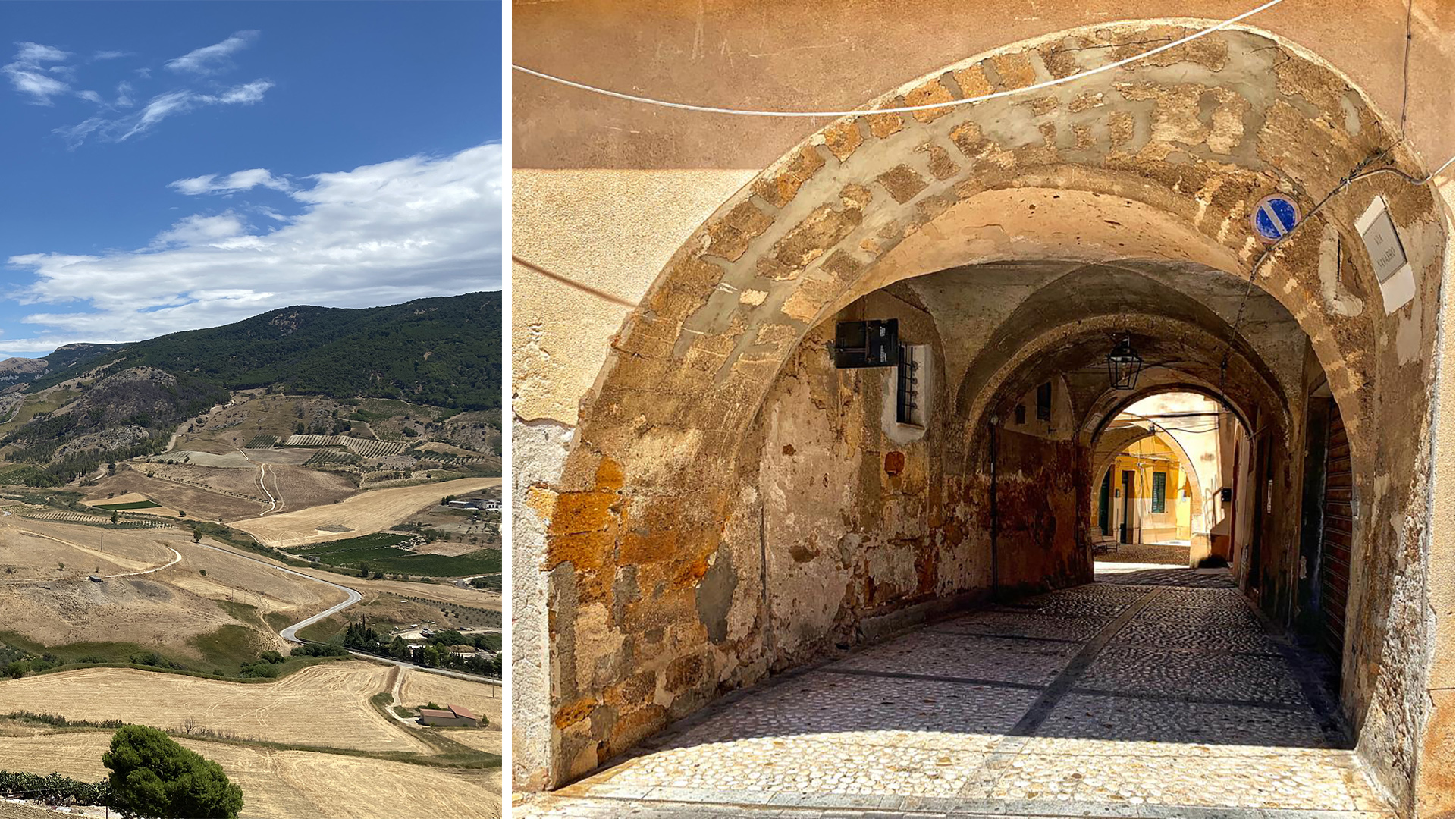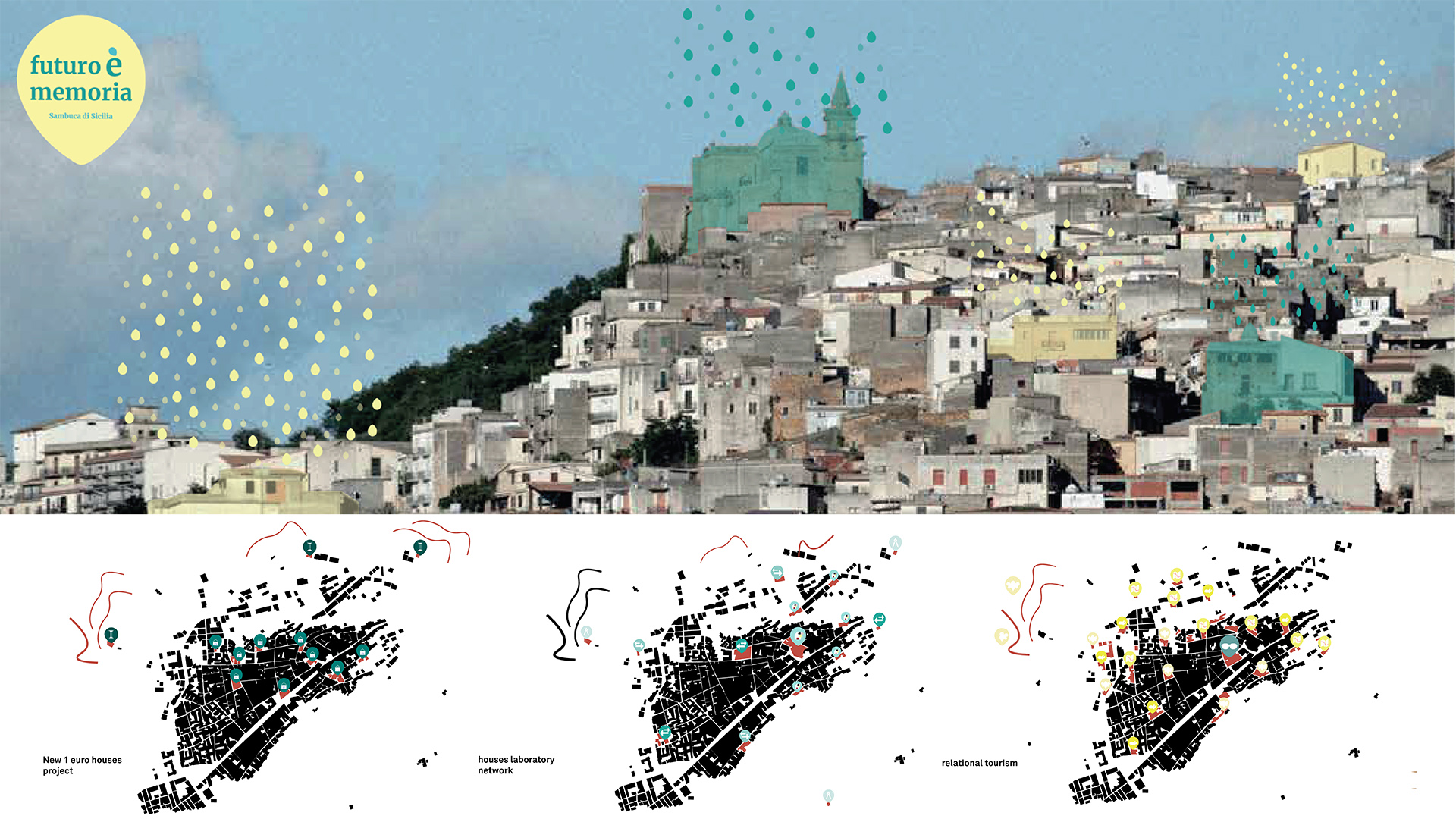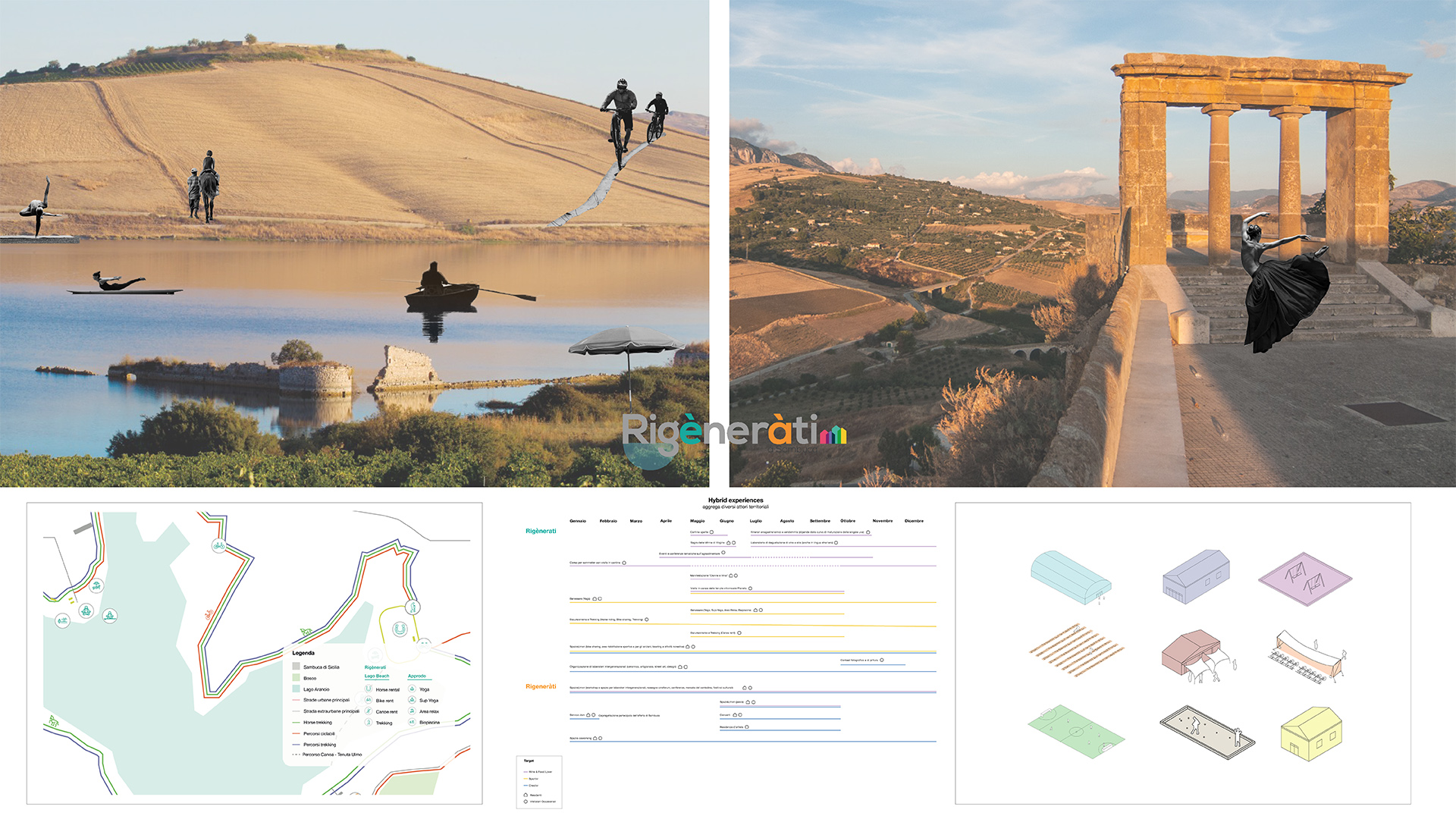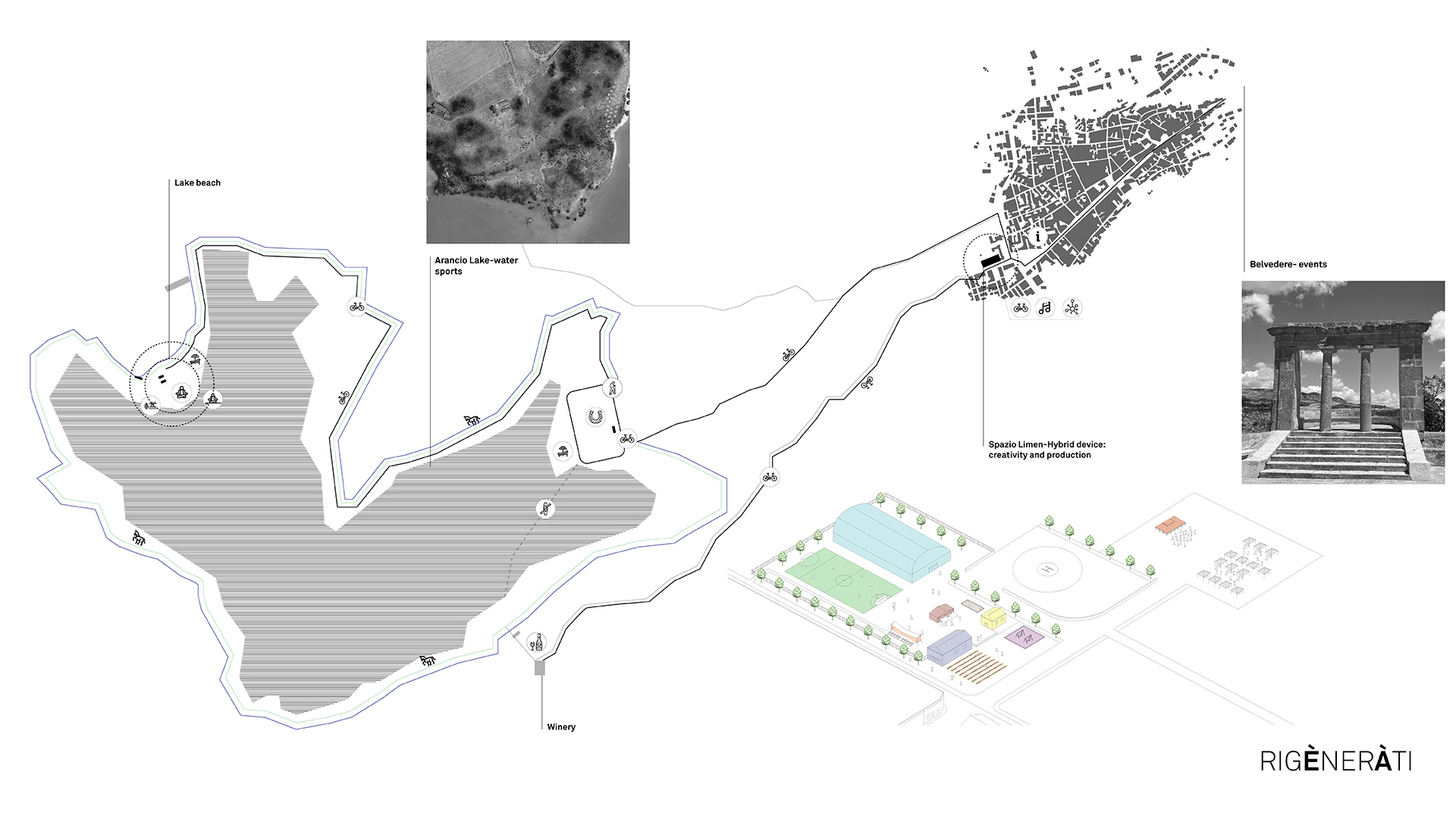The branding impulse can catalyse tourism and community’s resilience, promoting the reactivation of small towns through targeted transformations of built heritage and unused building stock, social innovation initiatives, and new forms of production. It can create a more adaptive process and opportunities for networks of small villages in inner areas where tourism can merge with different work/life models. The B4R work in the Sicani Mountains in Sicily offers a framework for the region’s development and manages to describe a path to activate “reserves of resilience” for new sustainable lifestyles. The settlement development options that the study discusses can be used as a model for similar considerations in comparable regions of Europe.
Towards a rural/urban co-opposition
An extensive and varied array of literature has dislodged the established idea of urbanised space (Dematteis 1988 and 2005; Lanzani 1991) and interpreted new post-metropolitan settlement forms (Balducci 2015; Soja 2011), arguing that urban/rural distinctions are no longer meaningful (Brenner 2016) and that the co-penetration of rural/urban-realms has grown from the traditional dichotomy of city/countryside, centers/peripheries.
Novel expressions of rural, mixed, and hybrid conditions demand new theoretical approaches and strategies that are able to overcome territorial imbalances and the traditional dual model (between metropolitan cities and inner areas) towards more balanced dynamics of development.
Although the dream of self-sufficiency that once nourished so many anti-urban utopias has often fuelled a radically opposing view between marginal areas and metropolitan areas, today we recognize the need for a more inclusive settlement model capable of rebalancing existing asymmetries by recharging peripheral areas with new centrality.
Finding perspectives for marginal areas is a highly relevant contemporary issue in Italy. After the process that, since the 1950s, has led to the gradual abandonment of inner areas and despite the constant presence of the metropolitan dimension in public policies, the territories on the margin have become visible through public and collective actions in the last few years (De Rossi 2018).
The National Strategy for Inner Areas1 (SNAI) (DPS 2013) and now the COVID 19 pandemic situation have reframed the debate on the paradigms of the past, going beyond the opposition between the city and the countryside. Metropolitan cities and countryside towns can be “opposite” in terms of living and working conditions but they can cooperate and become interdependent, preserving different identities: A “co-oppositional strategy” for understanding small towns not so much as just places of consumption for users from larger cities (of nature, traditions, etc.), but above all, as areas that cooperate with cities in innovative production (rural and cultural) and as a model of living that offers renewed ways of welfare and interaction with environment and heritage. The small towns in the inner areas can become an extensive cooperative system of centres connected to productive territories and metropolitan cities, new rur-urban archipelagos in which each town shares housing, public space and facilities, and contributes to a balance between rural, urban and land development (Carta, 2017- 2019).
Branding as strategy for co-creative communities in southern Sicily and the One Euro Houses project in Sambuca di Sicilia
From this background, a change of perspective is needed, addressing inner areas as motors of innovation and test-fields for new dynamics of development, looking at the potentials and resources specifically connected to space, settlements and landscapes (Schröder, Carta, Ferretti, Lino 2018).
Within the framework of the research project B4R Branding4Resilience, tourist infrastructure is used as a tool to enhance small towns by drawing resilient communities and new open habitats”, and the Università degli Studi di Palermo is focusing on the topic of “Co-creative communities”. The study explores the small towns and their communities in the Sicani area in southern Sicily. The project aims to develop explorative scenarios (Ferretti, Schröder 2018) and relational patterns that can open up design-driven knowledge production for larger spatial strategies supporting administrations in the formulation of development policies.
In the understanding of the research project, branding is a complex, socio-political construct composed of a multiple interdependency in spatial and temporal dimensions, among actors, different types of users and stakeholders. The branding differs with integrative and participative area plans: It is more concrete in actions as part of evolving strategies, more built on bottom-up strategies, and it uses more spatial and social capital and design. The branding impulse not only catalyses tourism but also the local identity of communities, and promotes the reactivation of small towns through targeted transformations of built heritage and unused building stock, social innovation initiatives, and new forms of production. This would strengthen community resilience, favouring re-settlement in small, depopulated towns and activating “reserves of resilience” and local economies for new sustainable lifestyles.

